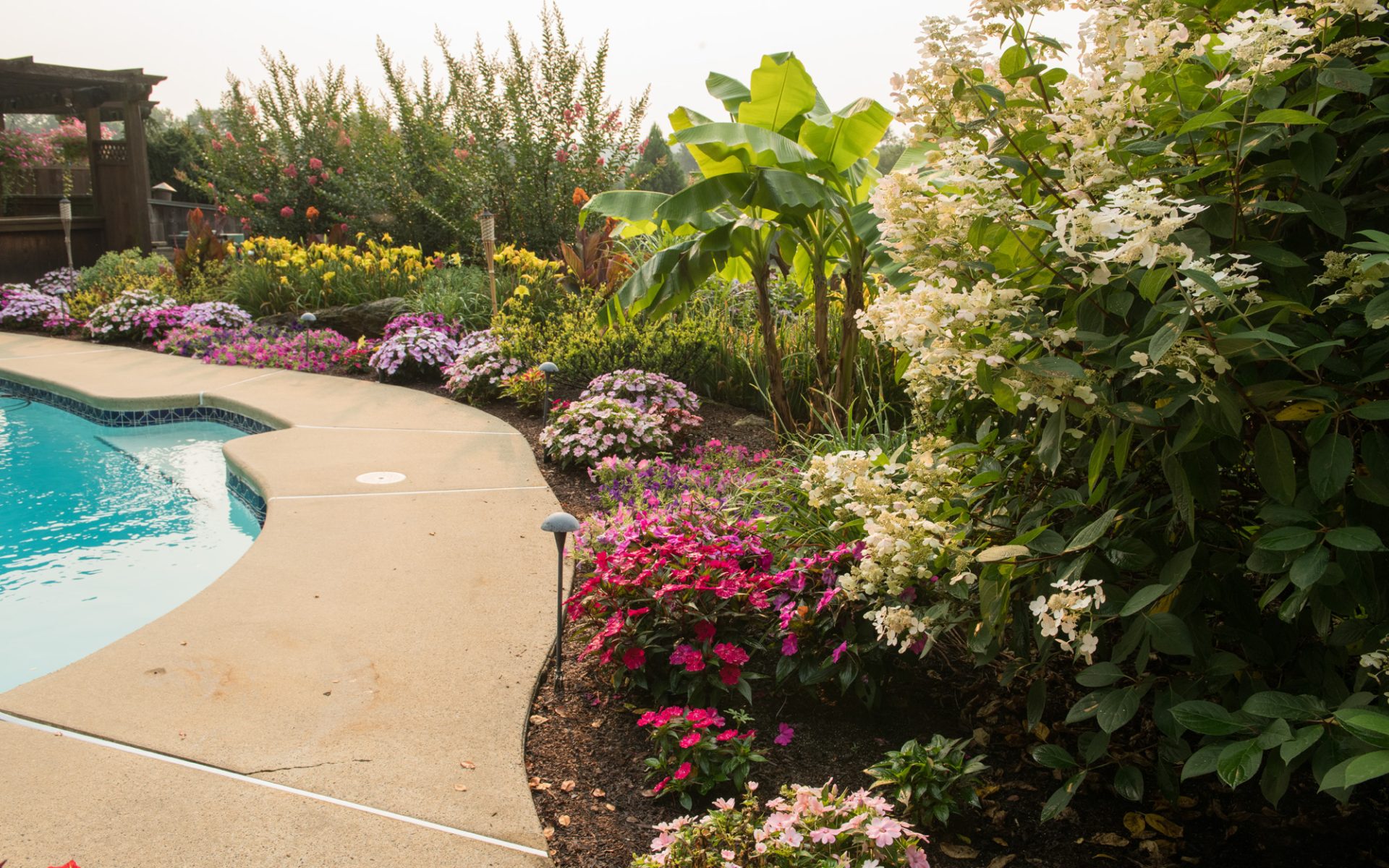The perfectly crafted flower bed can provide a beautiful accent for your home and outdoor landscape. Your plant, color, and design selections can make your flower beds unique and reflect your personal style season over season. Speak to one of our garden experts about how to make the best selections for your garden to achieve your beauty and function goals.
Here are 10 tips to get you started:
- Sunlight requirements: Determine the amount of sunlight the flower bed receives throughout the day. Some flowers thrive in full sun, while others prefer partial or full shade. Choose flowers that are suitable for the specific light conditions of your flower bed.
- Climate and hardiness: Consider the climate of your region and choose flowers that are well-suited to your area. Look for flowers that are known to be hardy and can withstand the temperature fluctuations and weather conditions in your region.
- Soil conditions: Assess the soil conditions in your flower bed, including its pH level, drainage, and fertility. Different flowers have different soil preferences. Some may thrive in well-drained soil, while others prefer moist or even sandy soil. Choose flowers that can adapt to the soil conditions in your flower bed or consider improving the soil if needed.
- Flower height and growth habit: Consider the height and growth habit of the flowers you select. Determine whether you want tall flowers at the back of the bed, medium-sized flowers in the middle, or low-growing flowers at the front. Also, consider whether you want flowers that spread or mound, creating a more compact or cascading effect.
- Flowering season and duration: Choose a combination of flowers that bloom at different times throughout the year to ensure a continuous display of color. Consider selecting flowers with varying bloom durations, including some that bloom early in the season, some that bloom mid-season, and others that bloom late in the season.
- Color scheme and aesthetic appeal: Decide on a color scheme or theme for your flower bed. Consider complementary or contrasting colors to create an eye-catching display. Think about how the colors of the flowers will blend with each other and with other elements in your landscape, such as nearby plants or structures.
- Maintenance requirements: Evaluate the maintenance needs of the flowers you are considering. Some flowers require more frequent watering, deadheading, or pruning than others. Choose flowers that fit within your desired level of maintenance commitment.
- Wildlife attraction: If you want to attract pollinators, such as butterflies and bees, or if you have specific wildlife in mind, select flowers that are known to be attractive to those species. Research which flowers are particularly beneficial for supporting local pollinators or other wildlife in your area.
- Personal preferences: Ultimately, choose flowers that you personally find appealing and enjoy. Consider your favorite flower types, fragrances, and any sentimental or symbolic meanings associated with certain flowers.
- Companion planting: Consider the concept of companion planting, where certain flowers have beneficial relationships with each other. Some flowers repel pests or attract beneficial insects, while others improve soil fertility or provide natural support for climbing plants. Take advantage of these relationships to create a more balanced and healthy flower bed.
By considering these factors, you can select a diverse range of flowers that will thrive in your flower bed, provide a visually pleasing display, and cater to your specific preferences and needs. Stop in to our garden center to see our seasonal blooms and talk to one of our experts to get started on a custom flower bed.





